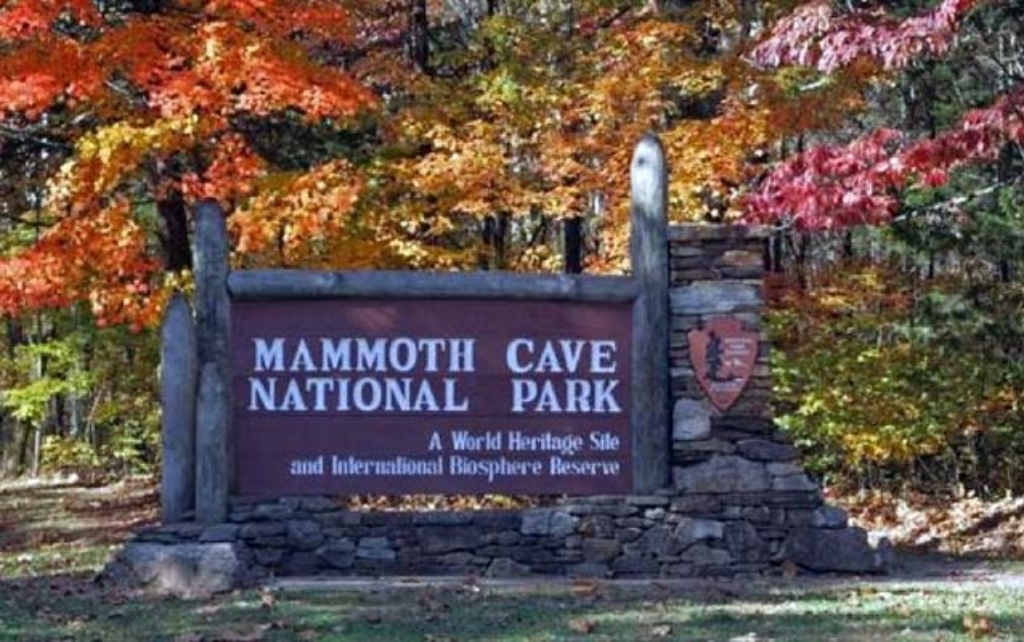
Mammoth Cave has represented the challenge of the unknown for millennia, from the time the first American Indian explorers ventured inside some 5,000 years ago, to the cave’s rediscovery by European settlers at the turn of the 19th century, and still today as explorers, scientists, and visitors from the United States and around the world brave its shadowed chambers in search of wonder and new knowledge. Named for the enormity of its “mammoth” subterranean vaults and the unparalleled extent of its passages, Mammoth Cave is the longest known cave system in the world with 412 miles surveyed to date.
In 1941, Mammoth Cave’s superlative qualities led the Southern Appalachian National Park Commission to recommend that the cave be made into a national park along with other national treasures such as Great Smoky Mountains and Shenandoah. The Mammoth Cave National Park Association and the Kentucky National Park Commission began the necessary, and unprecedented, 15-year process to convert settled areas into parklands, and once congressional requirements were met, Mammoth Cave National Park entered the national park system.
Today, Mammoth Cave National Park (the park) comprises approximately 52,830 acres in Edmonson, Hart, and Barren counties in the Commonwealth of Kentucky. Visitors are drawn to the park by its caves, scenic river valleys, bluffs, forests, and abundant wildlife. The park offers ranger-led cave tours and surface walks, camping, hiking, horseback riding, bicycling, scenic drives, canoeing and kayaking, fishing, accessible trails, and picnicking. This breadth of activities is available because Mammoth Cave National Park is a park on two levels—reclaimed hardwood forest and winding riverways above, and complex cave systems below.
African American History at Mammoth Cave
The history of enslavement and manumission at Mammoth Cave began in the earliest days of the 19th century, when teams of enslaved Africans and African Americans labored extracting minerals from cave soil for the commercial production of gunpowder before and during the War of 1812. Commercial tours began almost immediately after and continued through the Civil War, when several skirmishes and battles, including the battle of Munfordville in September of 1862, occurred less than 20 miles from the cave entrance.
Serving as guides and explorers at Mammoth Cave partially rescued at least four men from the obscurity of enslavement. Stephen Bishop, Materson Bransford, Nicholas Bransford, and Alfred Croghan, all had their existence documented in the written journals and diaries of various 19th century Mammoth Cave visitors. They were physically described, their personalities contemplated, their intelligence gauged, and their dialects imitated. At least one abolitionist characterized Stephen Bishop, who found many miles of new cave passages, as a charismatic natural leader who could govern the citizenry of freedmen in Liberia, should he choose to relocate there.
Modern cavers and researchers have monitored the cave explorations of these men for years. Their dated signatures are found in various places around the cave, often documenting discovery dates of passageways and exploration parties involved. With the exception of Mat Bransford, the personal and professional lives of enslaved Mammoth Cave Guides are shrouded in mystery and continue to be researched. The park’s cultural and geographic landscape, including segregated cemeteries, lends some understanding of these early guides, their families, and their enslavement.
Content used with permission from Eastern National’s Guidebook to African American History in National Parks.
Is there something we missed for this itinerary?
Itineraries across USA


















































